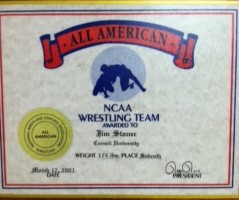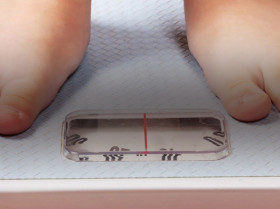Note: Some of you may have been reading my Tweets regarding #KeepOlympicWrestling and #SaveOlympicWrestling. It’s true, I never wrestled. I don’t approach this from an emotional view point, rather I approach this topic from a scientific and logical one. Below is something I presented last night to a local school district. I share here in case your school has this discussion (re: cutting high school wrestling). As an educator, coach, and public health consultant, I am concerned that the IOC’s recent decision will give unwarranted ammunition to high school athlete directors to cut this sport. You are welcome to modify, improve, build upon what I included below. #KeepHighSchoolWrestling
My name is Dr. Amanda Stanec and I thank each of you for your service, and your time. I’m not a wrestling coach. I’m not a wrestling mom. I never wrestled. Yet, I am here. I’m here as a community member. I’m here as a health and physical education professor. And, I’m here as a public health consultant. Thank you for listening to why I strongly support that wrestling remains in the Parkway School District.
Let’s start with what we know, as educators, regarding students in our schools:
- We know that we work tirelessly in our classrooms to support our students growing as 21st century learners.
- We know that the proposed NASPE (National Association for Sport & Physical Education) standards were developed with physically literacy as their foundation. Thus, we support students’’ development as physically literate individuals.
- We know that today’s students are among the first generation with a lower life expectancy than their parents. (Journal of American Medical Association, 2005).
Now, here are some facts related to the sport of wrestling at the high school level across the country:
- Currently, wrestling is the 6th most popular sport among high school athletes with over 272,000 participants annually.
- Currently, over 8,000 girls wrestle at the high school level and 22 colleges have women’s wrestling programs.
- Currently there are over 350 college wrestling programs, with 72 new programs since 1999.
Thus, the sport of wrestling is growing at all levels and membership and participation are at highs not seen since 1980.
Why such growth in the sport of wrestling? Perhaps, it’s:
- Cost to participate. Shoes. Headgear. That’s it. Wrestling is not expensive. Wrestling is accessible. I like that. It does not care what zip code a kid lives in. I like that even more.
- Size restrictions? There is a singlet in every size. To compete in wrestling – at any level - you can weigh less than 100 lbs, over 200 lbs, be a female or a male, have one leg or two legs or even no legs. Wrestling is inclusive. In fact, just two years ago, a NCAA D1 Champion, Anthony Robles, won while competing with one leg against peers who did not live with a disability. THIS should be of particular concern to you all. New clarifications on a federal law [Section 504 of the Rehabilitation act of 1973] presented by the Education Department’s office for Civil Rights states, “A school district is required to provided a qualified student with a disability an opportunity to benefit from the school district’s program equal to that of students without disabilities.” Many are calling this law the Title IX for students with disabilities. Thus, it does not appear logical to cut a sport that would [excuse me - that already does] welcome students with disabilities in order to meet the law’s mandate - at no additional cost.
Why such a big deal from a public health perspective?
- Wrestling fosters health-related physical fitness in its participants. Student athletes don’t enter a game for 20 seconds, or play one half. They train hard. Each day. It’s a lifestyle. They develop their cardiovascular endurance, muscular strength, muscular endurance, flexibility, and keep check on their body composition percentages.
Yet, this isn’t just good news for their health (which, of course, is reason enough alone to promote the sport).
Wrestling can enhance learning.
Dr. John Ratey - Harvard professor and medical doctor – published a book titled SPARK: The Revolutionary New Science about Exercise and the Brain several years ago. Dr. Ratey presents his research on exercise increases learning capacity. It presents research from a school district, Naperville, IL, on how they increased students’ learning with the only variable being increasing physical activity at moderate to vigorous intensities each day.
Wrestlers receive this type of physical activity each and every day. Hence, to cut a sport like wrestling could leave many youngsters without opportunity to receive such activity, and in turn, hinder their learning.
Ironically, given the age of the sport, wrestling provides schools with an amazing platform to support 21st century learners. Specifically, participants develop as:
- Risk Takers. Have to step on a mat against one opponent. My legs were heavy walking up to this mic. I can’t imagine if I had to try and take one of you down.
- Creativity. Wrestlers must come up with new technique constantly and apply creativity to experience success.
- Problem Solvers. Wrestlers must think critically, and quickly, and respond through effective problem solving.
- Collaboration. Teammates “drill” with one another each day. They work together to figure things out and to find ways to be successful. While an individual can move forward to states without peers, the entire team benefits when each wrestler is successful.
Schools can’t do it all from 8-3. We all know the value of extracurricular activities.
ALAS: If Parkway School District is committed to:
- Developing physically literate individuals
- Providing opportunities for all students (regardless of size, gender, economic status) physical activity opportunities after school.
- Acknowledging the revolutionary new science on exercise and the brain.
- Supporting students’ growth to be successful in our global 21st century community
…we would collaborate and work tirelessly to grow the sport (for males and females) for the students attending Parkway schools. The purpose of high school sport is not to train Olympians. Less than 1% of high school athletes play sport in college/university and less than 1% of college athletes go on to play pro post -collegiately. Don’t take away opportunities from kids to develop their physical literacy, their physical fitness, and to learn optimally in our classrooms.
Thank you for your time!
UPDATE! New research on the adolescent brain and risk provides additional support for why wrestling belongs in ALL schools
Dr. Daniel Seigle's new research on the adolescent brain examines dopamine levels during the adolescent years. Interestingly, teens have lower levels of dopamine when inactive than other stages of life and their dopamine levels rise much higher than during other stages of life due to experiences. Perhaps this is why adolescents tend to engage in risky behaviors. The good news is that the brain does not care if the risk is good risk (e.g., wrestling) or bad risk (e.g., drinking, texting while driving). The reality is, wrestling is risky. One engages in combat and sometimes does so during competition with fans in the stands. It makes sense, then, to support adolescents' physical and mental health by providing them healthy and good risk during these often difficult years. Here is a great read on dopamine and teenage logic published by the Atlantic which highlight's Dr. Seigle's work.
UPDATE! I’m so pleased to share that the Parkway School District has decided NOT to cut wrestling! I’m thrilled that our children will attend school in this school district (which has an outstanding reputation). It’s clear that the Superintendent and School Board have students’ well-being and learning potential guiding their decision making process. YAY Parkway!






This is just awesome, as the Head Wrestling Coach of Parkway North I thank you for stepping up and saying these TRUE and AMAZING things about wrestling. I hope we can save our sport!
My pleasure, Nigel! Thank you for your comment. My brother-in-laws wrestled for North “back in the day”. We moved to this area only 6 months ago because of the school district. I hope that what I said helped! Please feel free to pull from this as you need as you all move forward. Warmly, Amanda
Thank you so much for voicing these truths to the district. As the Head Coach at Parkway South, it would be a great tragedy to see this great sport removed. Parkway was once rich in wrestling, and with the help of concerned citizens such as yourself, it can be again.
It was my pleasure, Jim. I was surprisingly very nervous as I never spoke at such a meeting before. I hope my shaky voice didn’t do a disservice to the sport. I wish you all the best and thanks for all you do for so many high schoolers!
As a wrestling NCCP Level 3 (old system), a NCCP instructor, teacher and coach thank you for your support for the sport of wrestling. In so many ways wrestling is physical literacy. As you point out and know wrestling never leaves the athlete – at any age give a wrestler a patch of grass, a hotel room, a hallway… It doesn’t matter a wrestling match can happen anywhere.
NCCP? Are you in Canada, Bill? Thanks so much for commenting on my post. I truly appreciate your comments. Stop by the blog often – if you teach and coach you might enjoy some of the musings! I can relate to what you say. It’s why I didn’t bother purchasing a coffee table! My husband wrestled in college. :)
Thank you for presenting such a compelling argument for keeping the sport at a high school level. Women’s wrestling is just starting to take off. It really is more than a sport. It is a way of life that teaches valuable life skills for anyone given to learn them in a way that few sports and, indeed, few endevaors can.
Thanks so much for taking time to comment, Kevin. I think anyone who advocates against women wrestling is really doing the sport a disservice. As you say, it is just starting to take off. Many sports can teach life lessons, but I am not certain that humility can be taught in other sports as much as it is in wrestling. Thanks again!